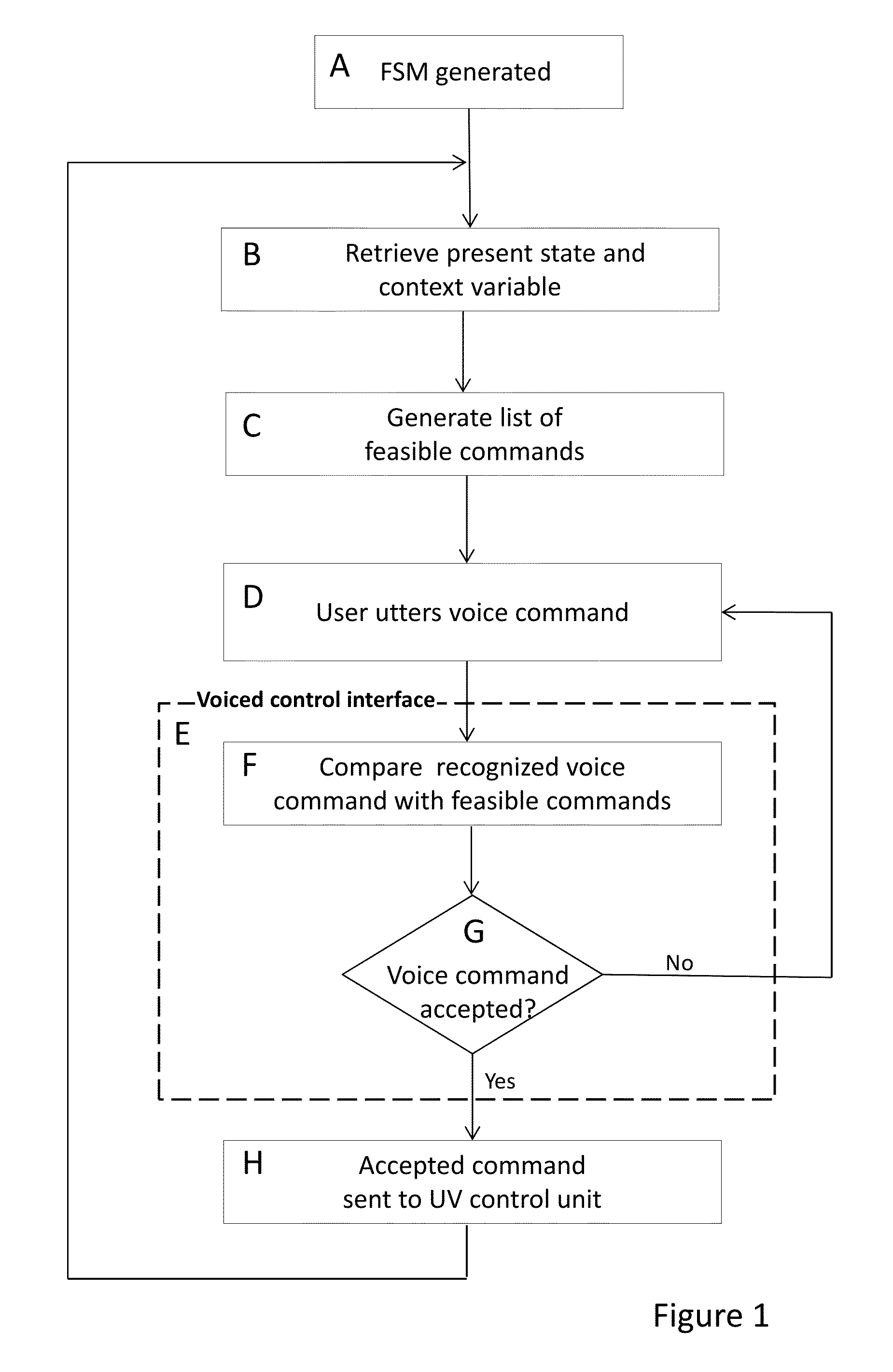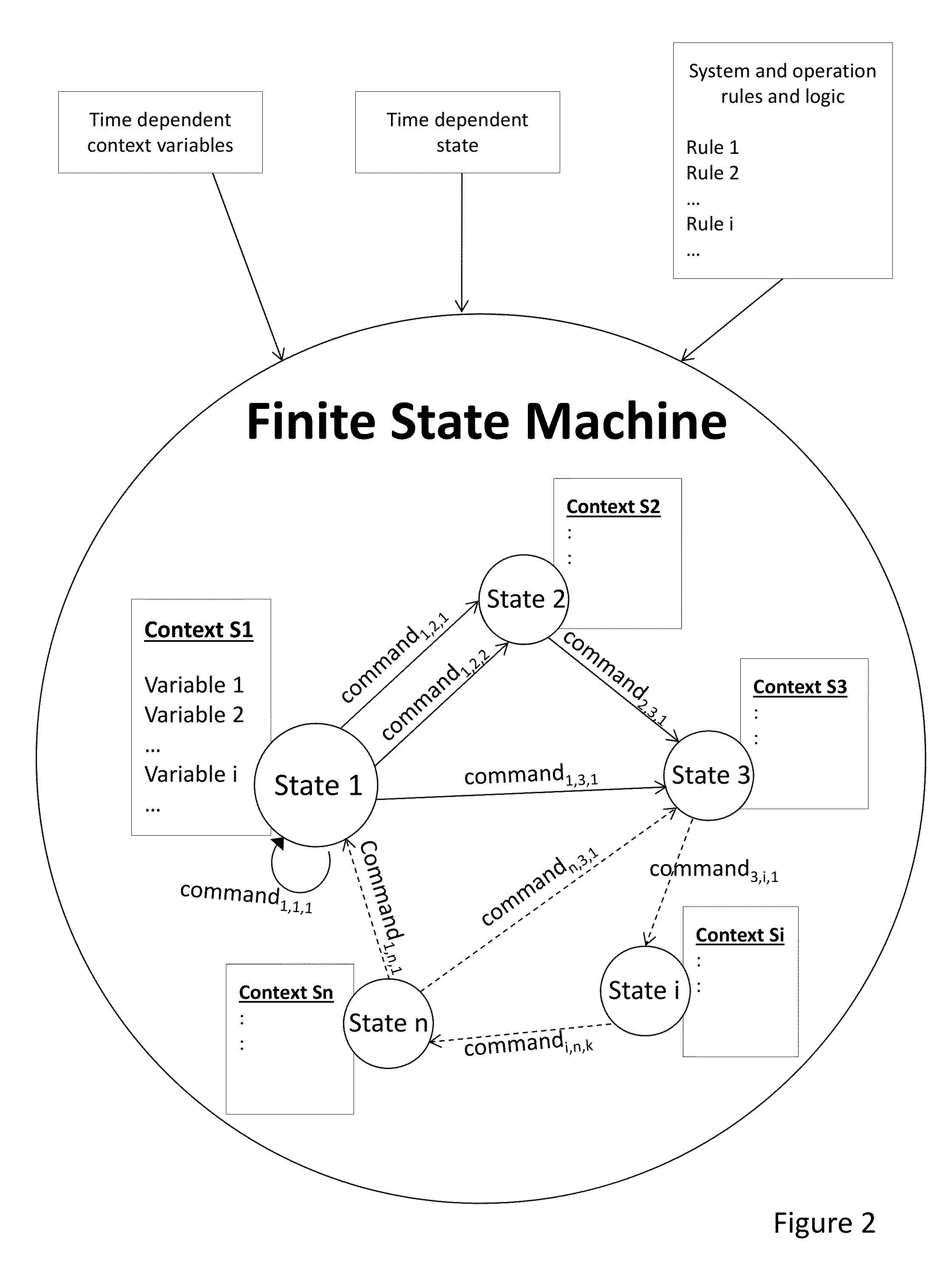State and context dependent voice based interface for an unmanned vehicle or robot
a voice-based interface and unmanned vehicle technology, applied in the direction of vehicle position/course/altitude control, process and machine control, instruments, etc., can solve the problems of insufficient integration of asr technology and uv or robot technology and operation, unnatural and cumbersome provision of human-machine control information, etc., to reduce the required computational load, improve the accuracy and robustness of asr, and reduce user training requirements and user errors
- Summary
- Abstract
- Description
- Claims
- Application Information
AI Technical Summary
Benefits of technology
Problems solved by technology
Method used
Image
Examples
example 1
UV Operation Employing ASR Language Model and Confidence Estimation
[0070]Consider a landed UV to be controlled by a human user by means of voice commands using the method presented in this invention. When the UV is powered or turned on, the control unit retrieves the information from the operating system of the UV or robot about the current state and context. The current state of the UV is “landed”, and the context of the UV includes “altitude=0 m” (above the ground or the surface on which it is landed), “horizontal speed=0 m / sec”, “vertical speed=0 m / sec”, and “temperature=23° C.”, and others. This state and context variables information is fed into the FSM in order to generate a list of feasible commands by making use of system and operating rules and logic that can be performed by the UV in its present operating state and context variables, which list is used to generate an ASR language model that represents one or more feasible actions that the UV can execute given the present s...
example 2
System and Operating Rules and Logic
[0074]The resolution of an inertial measurement unit of a UV, in combination with other sensors, can place an intrinsic resolution limitation on the recognized voice command. For example, the “rotate right ‘argument’ command may be feasible if ‘argument’ is specified according to the precision of the inertial measurement unit. In this example, the inertial measurement unit and sensors of the UV provide a resolution equal to 10° for rotational movements, and 0.5 meters for horizontal (forward, backward, right and left) and vertical (up and down) movements. The feasible list of all rotational and movement commands is then constrained to: “rotate left 10°”, “rotate left 20°”, “rotate left 30°”, . . . , “rotate right 10°”, “rotate right 20°, “rotate right 30°”, . . . , “go forward 0.5 meters”, “go forward 1.0 meters”, “go forward 1.5 meters”, . . . , “go backward 0.5 meters”, “go backward 1.0 meters”, “go backward 1.5 meters”, . . . , “go up 0.5 meter...
example 3
ASR Language Model and Confidence Score
[0075]In a method and system of recognizing feasible commands, a language model is prepared to represent one or more feasible, including all feasible, commands that result in an action that the UV can execute from the present state of the UV. In the example above, the finite state machine employs the present state and context variables information of the UV to generate a list of feasible commands that can be performed by the UV in its current operating state, which list is used to generate an ASR language model according to the first method. When the UV is in the current operating state of “landed”, the list can include “take off” and “take a picture”. When the user utters “take off”, the recognized voice command is matched with a feasible action with high confidence measure, according to the first method described above, and the UV is given the machine command to “take off”.
[0076]Alternatively, when the UV is in the present operating state of ...
PUM
 Login to View More
Login to View More Abstract
Description
Claims
Application Information
 Login to View More
Login to View More - R&D
- Intellectual Property
- Life Sciences
- Materials
- Tech Scout
- Unparalleled Data Quality
- Higher Quality Content
- 60% Fewer Hallucinations
Browse by: Latest US Patents, China's latest patents, Technical Efficacy Thesaurus, Application Domain, Technology Topic, Popular Technical Reports.
© 2025 PatSnap. All rights reserved.Legal|Privacy policy|Modern Slavery Act Transparency Statement|Sitemap|About US| Contact US: help@patsnap.com



